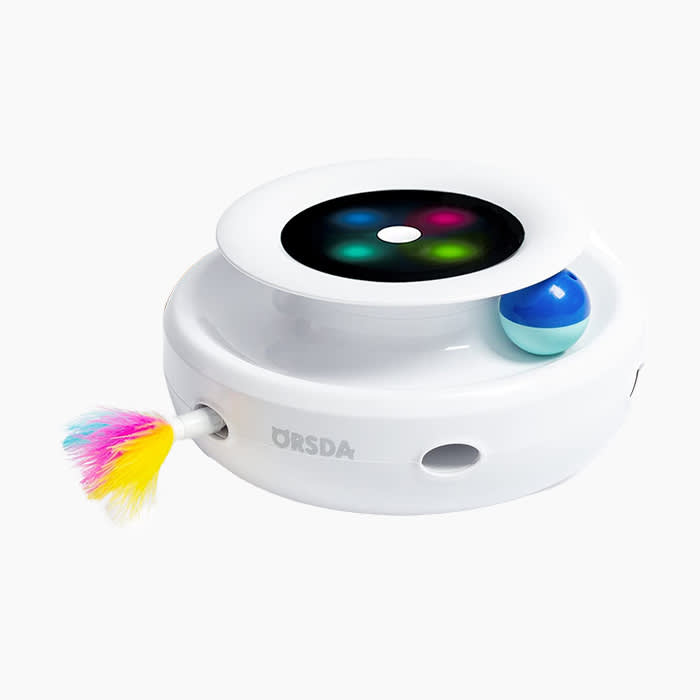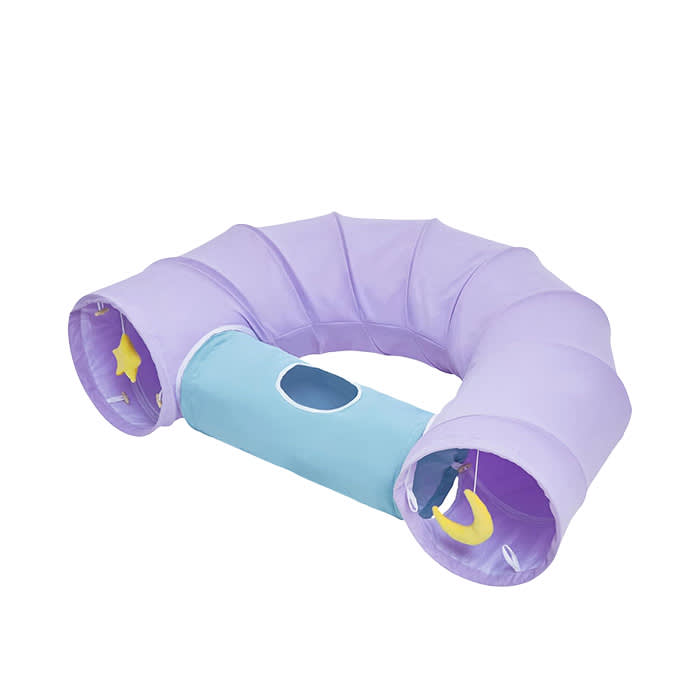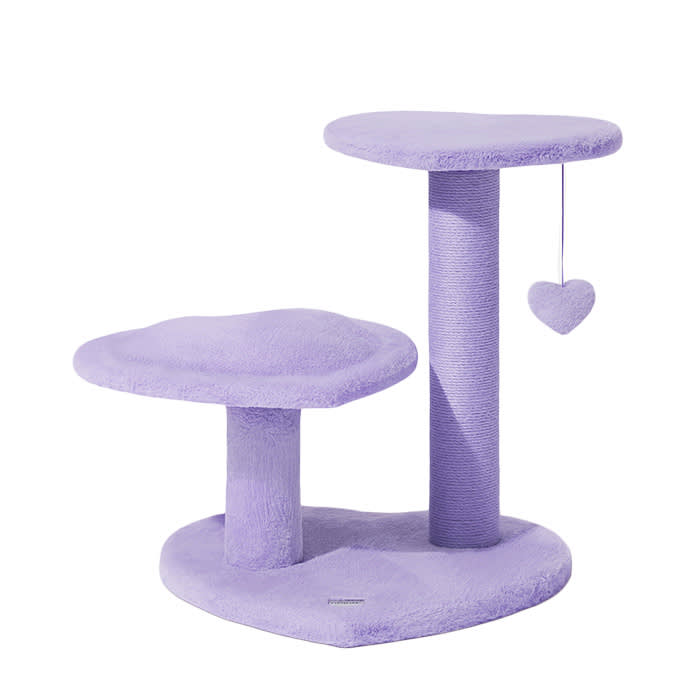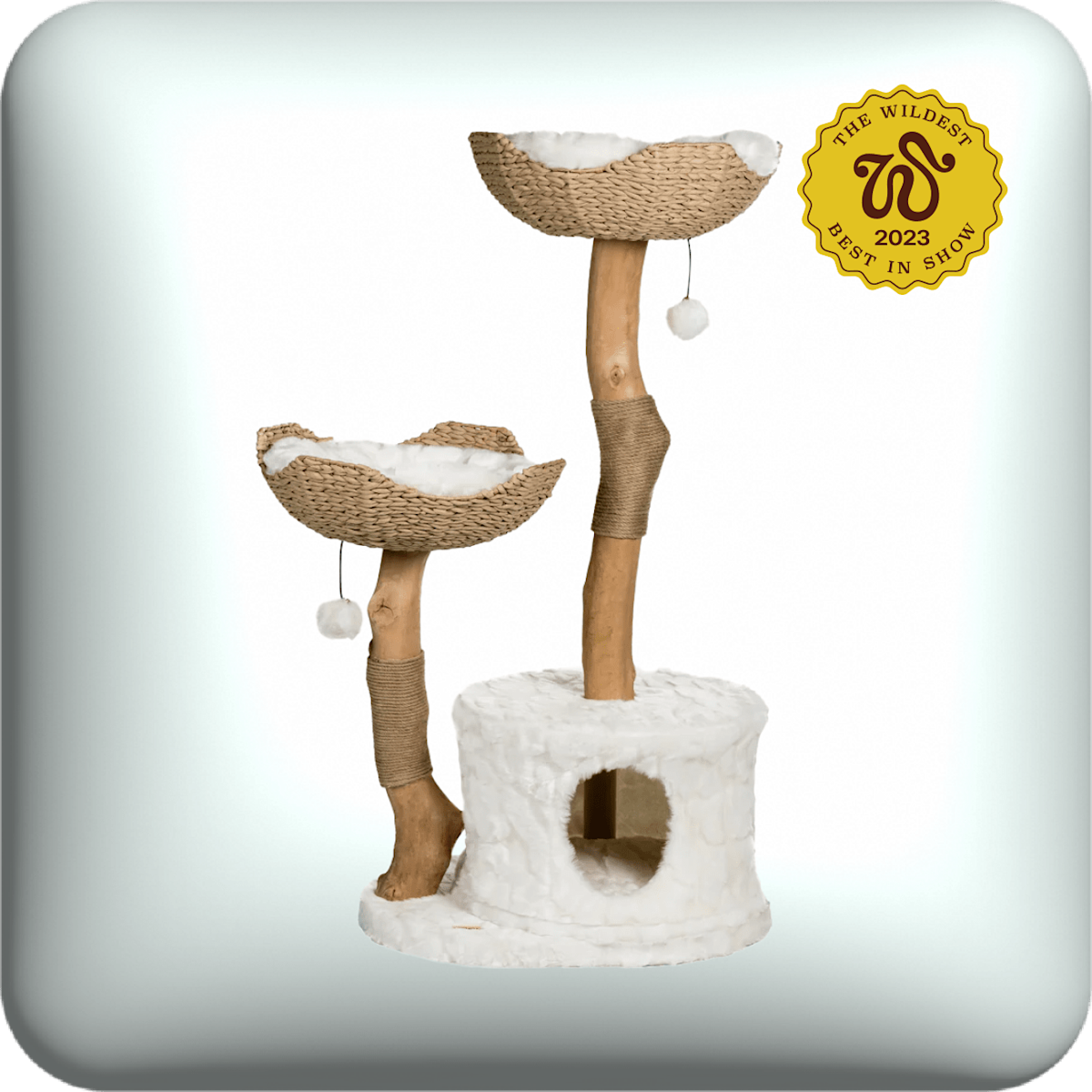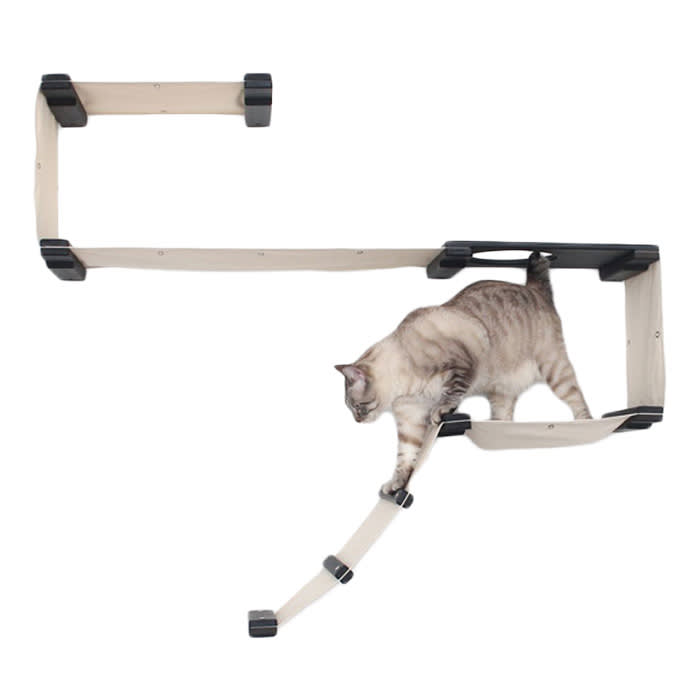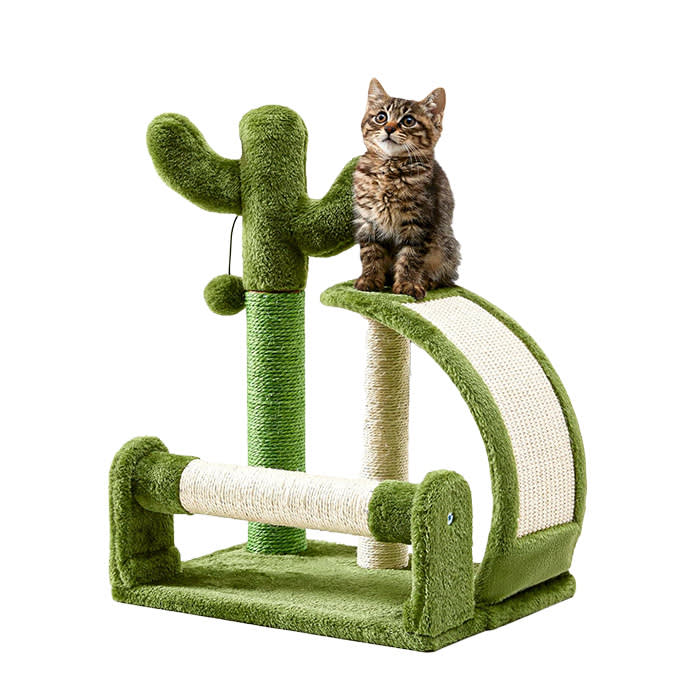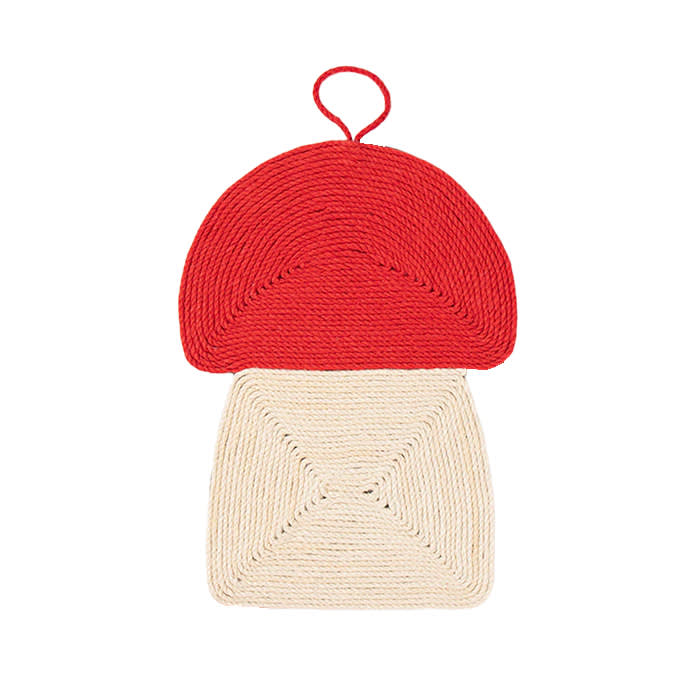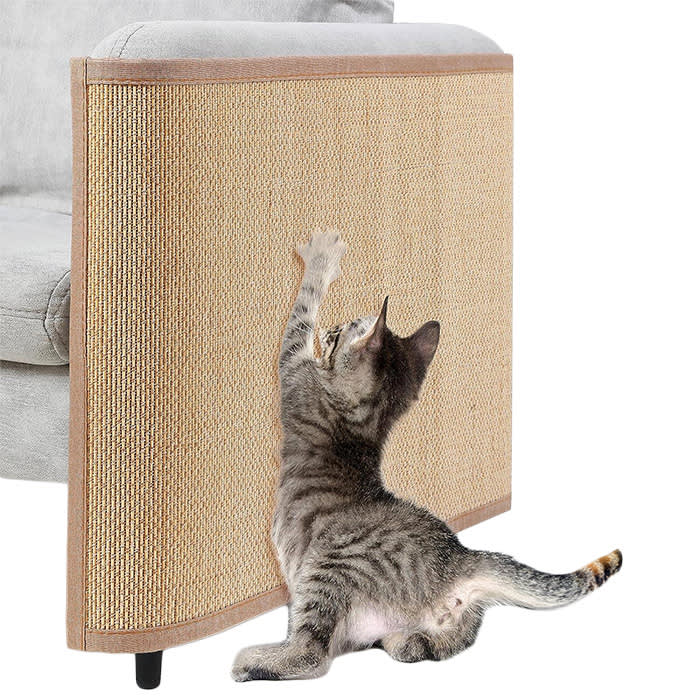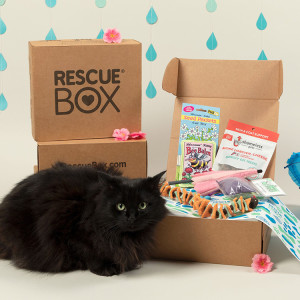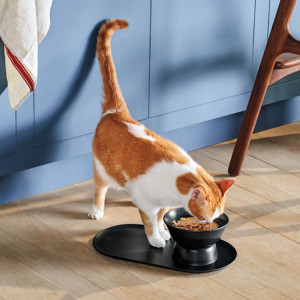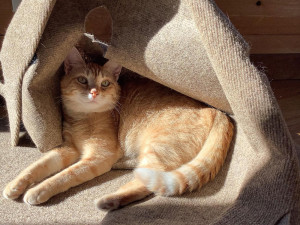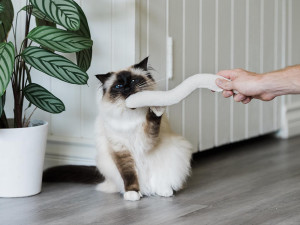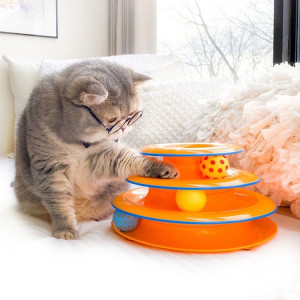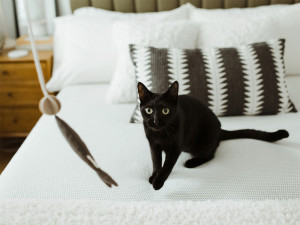The Best Toys for Kittens in 2025
They love to play, and you need to keep them busy. Here you go.
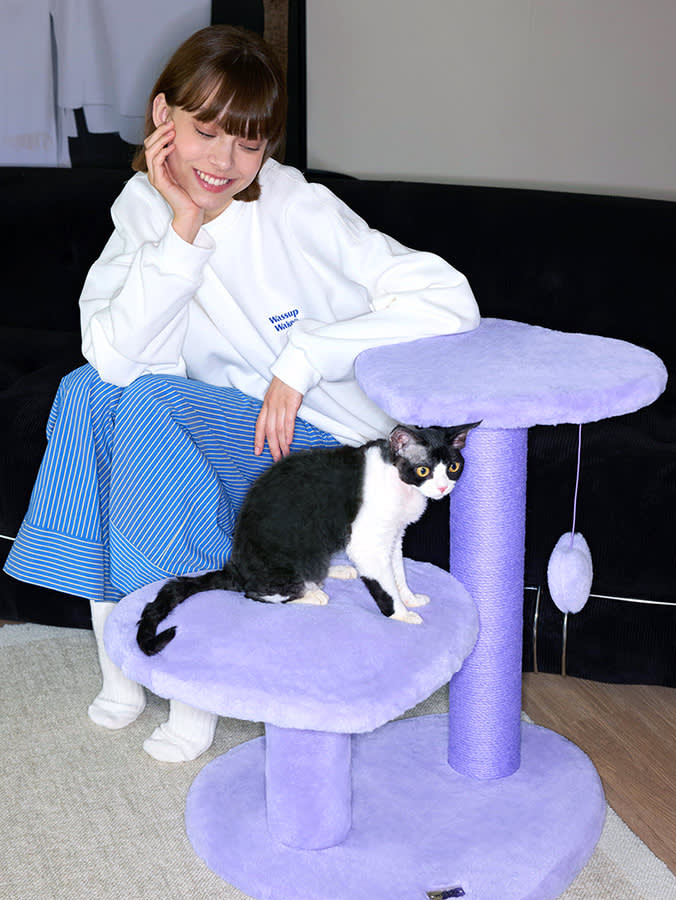
Share Article
In This Article:
How Do Kittens Play? Why Is Play Important to Cats? How to Choose the Best Toys The Best Toys for Hunters The Best Toys for Prowlers The Best Toys for Climbers
Adopting a new kitten can come with a pretty steep learning curve — for both you and your cat. But, between teaching your cat to use the litter box and to be obsessed with you, there’s another subject your kitten needs to be schooled in: play.
Play is just as important for a cat’s development as it is for their quality of life. The right toys will keep your kitten’s mind and body active. in addition to being important tools in building your kitten’s life skills such as hunting, prowling, climbing and more.
To learn more, we spoke with cat behaviorist Mikel Delgado opens in new tab about the importance of play for a kitten’s development.
How do kittens play?
Kittens draw on their instincts when it comes to learning how to play, and those moments of play help turn instincts into skills.
“Play gives kittens the ability to safely practice skills they will ‘need’ in the future — skills that are very much related to the instincts of cats, for example to hunt, protect themselves from predators, and interact with other members of their species,” Delgado says.
Kittens first learn how to play socially, often with their mom or members of their litter. These crucial first moments of play teach kittens social cues and boundaries that they will use throughout their lives. As kittens get older, they will begin to play with objects, such as toys.
Why is play important to a kitten’s development?
“There are different types of play (such as object play and social play) that all cats use to gain skills related to hunting, fighting, exploring, climbing, and so on!” Dr. Delgado says. “Even though many of our house cats are kept indoors and won’t necessarily need these skills, their bodies and brains have evolved to still practice these behaviors!”
In addition to skill-building, playtime is enriching for your cat. The proper outlet for play, such as with toys or jungle gyms, will greatly reduce destructive and depressive tendencies in your cat.
How do you choose the best toys for your kitten?
Like their grown-up counterparts, kittens enjoy playing with toys that stimulate their natural instincts. “Kittens, just like cats, respond well to toys that look like prey animals. That is because to cats, hunting and play are very similar!” Dr. Delgado adds. And, because kittens are still learning and testing boundaries, safety is key to ensuring playtime is as safe as it is fun, especially when you’re not around.
“The most important thing about toys you will leave for your kitten to play with alone is that they aren't small enough to be a choking hazard,” Dr. Delgado advises. “This also means looking for small parts that could be chewed off and swallowed, such as the eyes or nose on a little mouse toy.”
Aside from safety, kitten parents should aim to provide a variety of toys that allow cats to build the different skills Dr. Delgado mentions — the big ones being hunting, prowling, and climbing.
The best toys for cats who like to hunt
Here’s a hard/weird truth about your little precious baby kitten: They definitely want to kill something and rip its guts out. Sorry, but that’s why we evolved to keep cats in the first place! Cats have played an integral role in fending off disease and infestation by hunting and killing rodents, bugs, and other vermin that find their way into our homes.
And, as a treat, our cats want to rip it to shreds and claim evolutionary victory over their prey. But if your home lacks the necessary vermin for your kitten to practice their hunting skills on, toys that resemble the movement or look of prey can work in a pinch.
Best toy for prowlers
Prowling is a closely related skill to hunting, though cats will prowl without any prey in their midst. Prowling is simply your cat’s desire to explore, hide, and engage with interesting or new spaces. When it comes to kittens, choose size-appropriate prowling toys that challenge, rather than overwhelm, your kitten.
Best toys for climbers
Cats are pretty impressive climbers, but they still need to take baby steps when honing this skill. Kittens begin to climb at three to four weeks old when they’re still under the care of their mothers. On their own, kittens should be given climbing toys that take into account their size and ability.
Best toys for scratchers
Scratching is a normal and needed skill for all kittens to have because it maintains their claws and decreases their stress level. As a cat parent, you will want to direct this energy into proper outlets (not your Eames recliner) at an early age.
FAQs (People also ask):
How long should I play with my kitten?
Depending on your cat’s interest levels, anywhere between 20 and 60 minutes of play a day should keep your kitten happy and healthy. Split this time into segments to align with your kitten’s natural energy bursts.
What do kittens like to play with?
Kittens like the same types of toys that cats do, such as interactive wands and hunting toys, in addition to jungle gyms and scratchers.
When do kittens start playing with toys?
Kittens begin playing with toys between seven to eight weeks. From seven to 14 weeks, your kitten might experience an increased interest in toy play as they discover their newfound skills.
Why does my kitten play in the litter box?
Kittens play in the litter box for the same reason human toddlers play in the toilet; it seemed fun and no one was around to stop them. There’s no scientific reason for why kittens play in the litter box — but engaging with them in play outside of the litter box might help curb the behavior.

Rebecca Caplan
Rebecca Caplan is a writer based in Brooklyn whose work has been featured in The New Yorker, Reductress, and Vulture. She lives in Brooklyn with her perfect, toothless dog Moose.
Related articles
![cat subscription box collage]()
9 Subscription Boxes Your Cat Will Thank You for Endlessly
Curated treats, toys, and catnip. What more could a cat ask for—besides the cardboard the toys arrived in?
![A cat eating out of a black bowl from the brand, cat person.]()
6 Best Fresh Cat Food Delivery Services That Will Have Your Kitty Purring at Full Volume
It’s like Postmates — but for you spoiled cat.
![Tan cat laying in the sunlight on a beige colored Ripple Rug]()
This Ripple Rug Is the Perfect Activity For Your Easily Bored Kitty
The best toy to keep your cat focused, entertained, and deterred from scratching the furniture.
![A fluffy Siamese cat sitting on the wooden floor playing with a the Snake Cat Toy from Boba and Vespa next to a striped Calathea plant]()
7 Cat Kicker Toys That Will Help Your Cat Beat Their Boredom
The cat kicker toys that will keep your cat booked and busy (and kicking like they’re Megan Rapinoe).
![Cat playing with orange puzzle toy]()
The 5 Best Interactive Cat Toys By Nina Ottosson
The puzzle toys that’ll unleash your cat’s inner cougar.
![Black cat staring at a cat toy]()
How to Play With Your Cat
Cat behaviorist Cristin Tamburo’s got a game plan.


